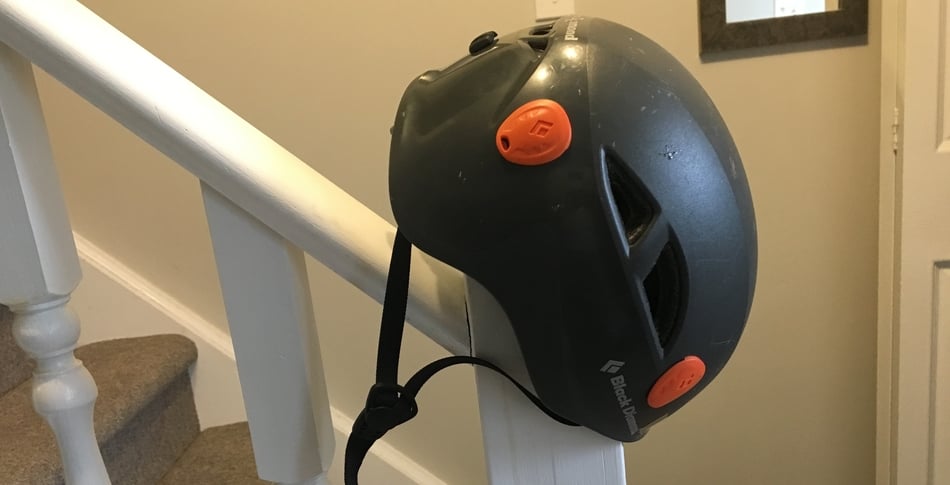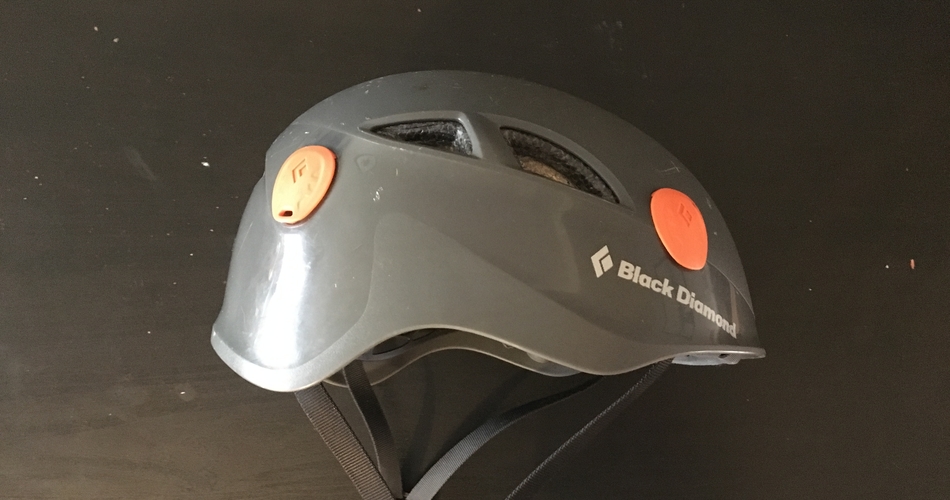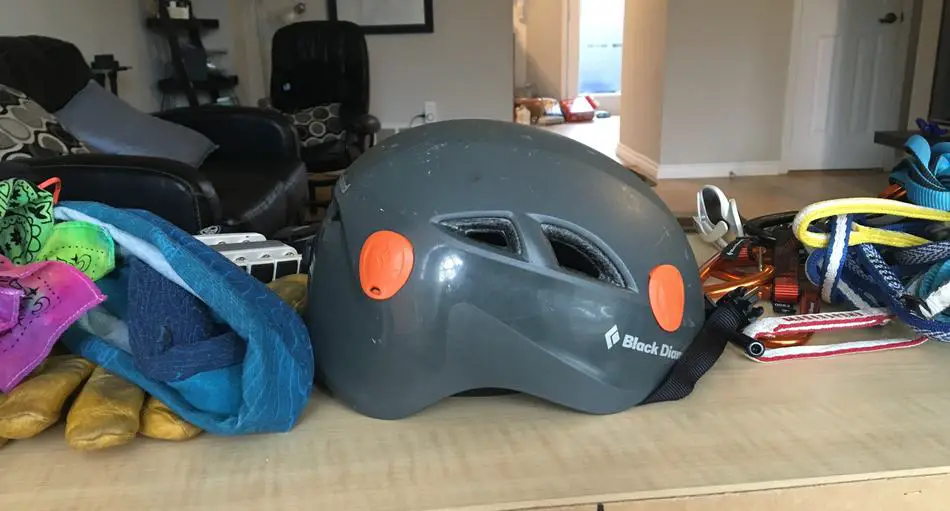Helmets are potentially the most important piece of gear that you can have while rappelling. I wanted to find out which helmet could best protect me, so I went out a did a little research.
For rappelling, I recommend using the Black Diamond Half Dome helmet. The half-dome is designed to take damage from rockfall above, which is a primary concern when rappelling. The Half Dome balances function with affordability to win my top choice.
When lowering yourself from fixed lines, you’re far less likely to swing violently into the rock than you are when you’re rock climbing. Because of this, it’s less important for your helmet to protect the sides of your head and more important that you be sheltered from top-down impacts, like those presented by falling rock. Because of its sturdy design and rounded shape, the Half Dome is an excellent choice to protect from this kind of danger.
Criteria to Judge a Helmet On
As I said above, helmets are probably the most important piece of safety gear that you can have. While there are many helmets out there designed for climbing— some of them far more advanced than the Half Dome— these products aren’t necessarily optimized for rappelling. They often lack in certain essential features while overcompensating in others.
Here’s some factors to keep in mind when shopping for a rappelling helmet:
- Safety features
- Comfort of fit
- Price
- Durability
- Breathability
- Weight
Let’s take a look at how the Half Dome performs for all of these individual categories.
Safety Features
As I said, the Half Dome is excellent in some areas of safety while less impressive in some. Because of its top-heavy design, it doesn’t do as good of a job protecting the back of the head or your temples. However, as I said above, this kind of protection is far less important when you’re rappelling, as you have less of a chance of swinging violently into the rock.
What you do need to protect from is dangers coming from above, and in this area, the Half Dome shines. It’s exterior shell, which is made up of ABS plastic, can absorb a sizeable impact without ever needing to compromise the integrity of the EPS foam inside. The wide design and full-sized exoskeleton are also designed to deflect impacts so that your neck doesn’t take as much damage.
Comfort of Fit

The BD Half Dome is a mixed blessing when it comes to comfort of fit. On one hand, it’s a little awkward in shape, and it can feel like it adds an extra six inches to the top of your head. It’s not the most discrete looking helmet on the market, either, so it doesn’t win any points for fashion.
The adjustable head strap does help, though, and I’ve found that it does a long way in making thee Half Dome sit better on my head. Another great feature that Black Diamond has added is a woman’s-specific design, which has extra space at the back to allow for a pony tail to fit underneath the helmet.
Price
This is an area where the Half Dome shines. Priced at just $60, it’s far and wide one of the most affordable helmets on the market. Don’t let the lower price dissuade you from buying, however; Black Diamond is one of the most reputable companies within the climbing sphere, and you don’t have to be worried about trading safety for money.
Most of the additional price that comes with a more expensive helmet is used to pay for features like lighter weight, a more comfortable design, or more features (like extra headlamp clips). While the Half Dome may lack somer of these features, it certainly doesn’t compromise on safety.
Durability
This is another one of the Half Dome’s strengths. As I mentioned above, it’s dual-layered system and full plastic covering gives it the ability to withstand heavy impacts and still maintain its integrity.
Durability means more than that, however. One of the great things about the Half Dome is how much confidence you can have in it when you’re not wearing it. Unlike some lighter helmets comprised mainly of foam, you never have to worry about banging the Half Dome around, dropping it by accident, or placing your gear down on top of it. I’ve used this helmet for three years now, from cragging to long scrambling missions, and it’s always held steady for me.
Breathability
To maintain its durability, however, the Half Dome did have to sacrifice something, and that comes in the form of breathability. The helmet has some vents, but its heavy plastic exterior can make it difficult for air to escape.
Again, I personally see this as a far less important criteria for rappelling gear. If you want a helmet to wear on long alpine trips where you’ll be working up a sweat, breathability might be a large priority. For rappelling, however, overheating has never been high on my list of concerns.
Weight
Similar to above, the Half Dome sacrifices any claims it might have had to being a lightweight piece of equipment. It’s one of the heaviest helmets out there, so if weight is a concern, I wouldn’t recommend buying this one. If all you need it for is rappelling, however, I personally believe that the added safety is more important than shaving off a few grams.
Helmet Safety

There’s a couple of things to keep in mind to ensure that your helmet offers as much protection as possible. First of all, proper fit is essential. You have to make sure that the helmet is snugly on your head, so much so that it won’t move if you take an unexpected fall. The front of the helmet needs to be pulled low enough over your forehead to be effective.
Another important thing to consider is when you’re going to retire your helmet. Several times in this article, I mention the fact that the Half Dome can absorb multiple impacts without sacrificing its integrity. This is true, but it’s not something that you ever want to test.
The extra durability of the Half Dome is great if, for example, you’re on a long rappel and you experience multiple instances of rock fall. In that case, it’s nice to know that one solid blow isn’t going to render your protection useless. However, that doesn’t mean that you should continue to use the Half Dome once it’s taken an impact.
Similar to a biking helmet, you want to retire your rappelling helmet after any serious stress has been placed on it. If your helmet ever absorbs an impact and you think ‘Gee, I would have been in trouble if I hadn’t been wearing this’— that’s the sign that it’s time to retire your helmet and invest in a new one. Please, don’t gamble with your life for the sake of $60.
So there you have it! That’s my suggestion on the best rappelling helmet, and my reasoning for why I think the Black Diamond Half Dome is ther perfect tool for the job.

